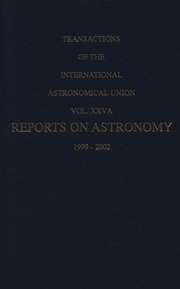Article contents
Simple Instruments in Radio Astronomy
Published online by Cambridge University Press: 25 April 2016
Abstract
Radio astronomy has a major role in the study of the universe. The spiral structure of our Galaxy and the cosmic background radiation were first detected, and the dense component of interstellar gas is studied, at radio wavelengths. COBE revealed very weak temperature fluctuations in the microwave background, considered to be the seeds of galaxies and clusters of galaxies. Most electromagnetic radiation from outer space is absorbed or reflected by the Earth’s atmosphere, except in two narrow spectral windows: the visible-near-infrared and the radio, which are nearly transparent. Centimetre and longer radio waves propagate almost freely in space; observations of them are practically independent of weather. Turbulence in our atmosphere does not distort the wavefront, which simplifies the building of radio telescopes, because no devices are needed to correct for it. Observations at these wavelengths can be made in high atmospheric humidity, or where the sky is not clear enough for optical telescopes.
Simple instruments operating at radio wavelengths can be built at low cost in tropical countries, to teach students and to familiarize them with radio astronomy. We describe a two-antennae radio interferometer and a single-dish radio telescope operating at centimetre wavelengths. The Sun and strong synchrotron radio-sources, like Cassiopeia A and Cygnus A, are potential targets.
- Type
- Section 5: Small Telescopes or Internet Access?
- Information
- Copyright
- Copyright © Astronomical Society of Pacific 2001
References
- 2
- Cited by


